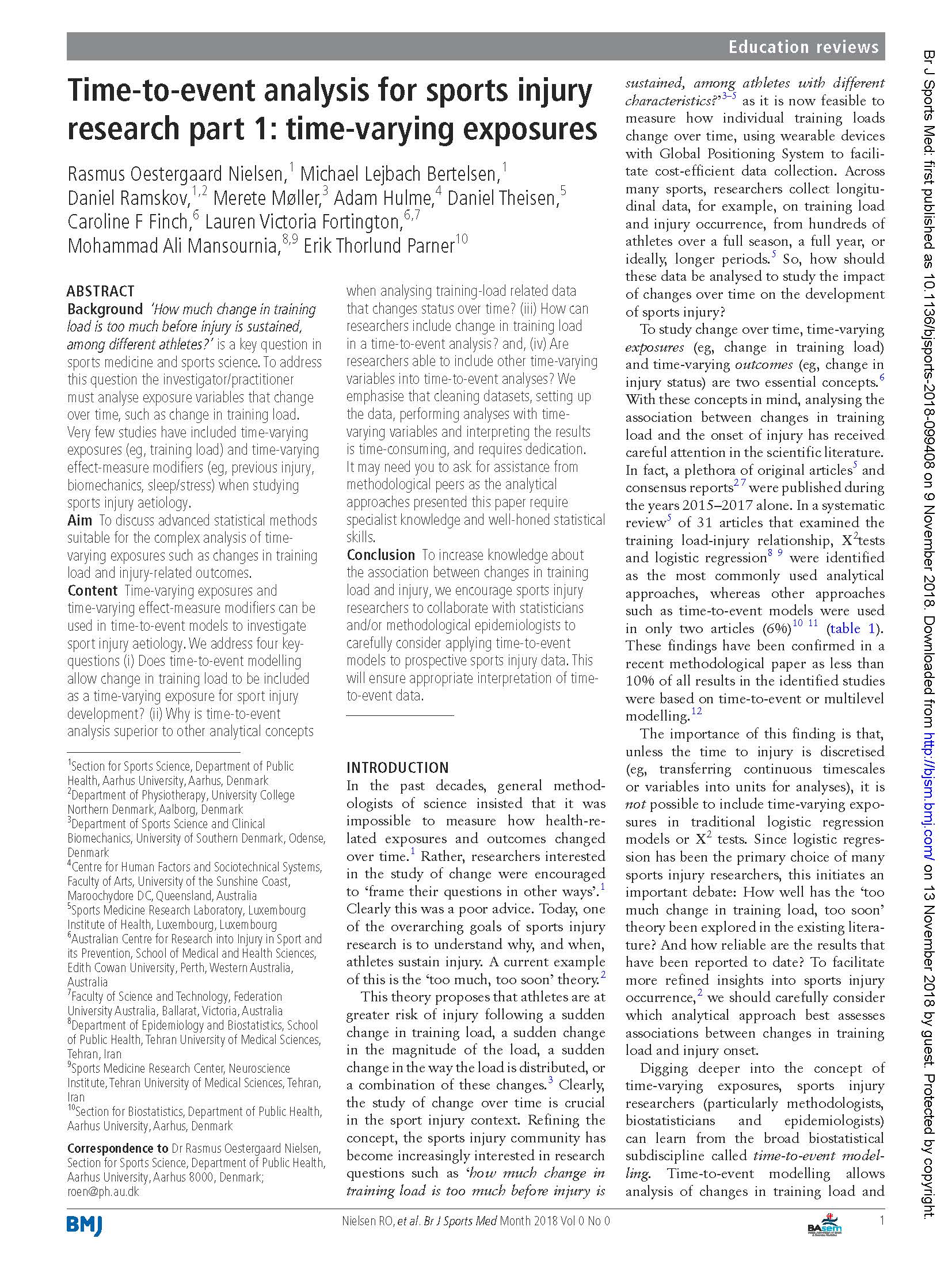Two BJSM educational reviews published
RUNSAFE and collaborators present two methodology reviews visualizing the important tools time-to-event analyses can offer when analyzing changes in training load and injury.

'How much change in training load is too much before injury is sustained, among different athletes?' is a key question in sports medicine and sports science. To address this question the investigator/practitioner must analyse exposure variables that change over time, such as change in training load. Very few studies have included time-varying exposures (eg, training load) and time-varying effect-measure modifiers (eg, previous injury, biomechanics, sleep/stress) when studying sports injury aetiology.
Two articles
On November 9th 2018, two new educational reviews became available at British Journal of Sports Medicine (BJSM). In these articles the aim was to discuss advanced statistical methods suitable for the complex analysis of time-varying exposures such as changes in training load and injury-related outcomes. In addition, the aim was to illuminate: (i) the possibilities of including time-varying outcomes in time-to-event analyses, (ii) how to deal with a situation where different types of sports injuries are included in the analyses (ie, competing risks), and (iii) how to deal with the situation where multiple subsequent injuries occur in the same athlete
Conclusions
To increase knowledge about the association between changes in training load and injury, we encourage sports injury researchers to collaborate with statisticians and/or methodological epidemiologists to carefully consider applying time-to-event models to prospective sports injury data. This will ensure appropriate interpretation of time-to-event data.
Time-to-event analyses can handle time-varying outcomes, competing risk and multiple subsequent injuries. Although powerful, time-to-event has important requirements: researchers are encouraged to carefully consider prior to any data collection that five injuries per exposure state or transition is needed to avoid conducting statistical analyses on time-to-event data leading to biased results. This requirement becomes particularly difficult to accommodate when a stratified analysis is required as the number of variables increases exponentially for each additional strata included. In future sports injury research, we need stratified analyses if the target of our research is to respond to the question: 'how much change in training load is too much before injury is sustained, among athletes with different characteristics?' Responding to this question using multiple time-varying exposures (and outcomes) requires millions of injuries. This should not be a barrier for future research, but collaborations across borders to collecting the amount of data needed seems to be an important step forward.
References
Nielsen, R.O.; Bertelsen, M.; Ramskov, D.; Møller, M.; Hulme, A.; Theisen, D.; Finch, C.; Fortington, L.V.; Mansournia, M.; Parner, E.T. Time-to-Event Analysis for Sports Injury Research Part 2: Time-Varying Outcomes. British Journal of Sports Medicine 2018. In press.
Nielsen, R.O.; Bertelsen, M.; Ramskov, D.; Møller, M.; Hulme, A.; Theisen, D.; Finch, C.; Fortington, L.V.; Mansournia, M.; Parner, E.T. Time-to-Event Analysis for Sports Injury Research Part 1: Time-Varying Exposures. British Journal of Sports Medicine 2018. In press.
